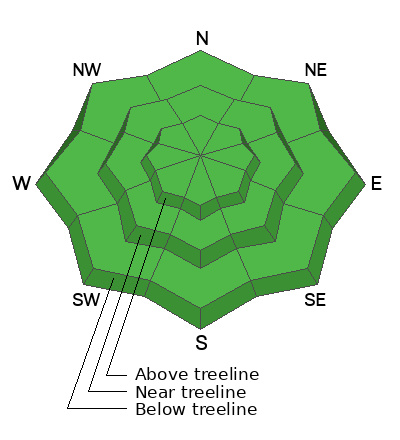We will be giving a free Know Before You Go Avalanche Awareness talk on Tuesday, Dec 6 at 6:00 p.m. at the MARC (111 E 100 N).
Join us for the
1st Annual UAC Moab/LUNA Winter Kickoff Party on 12/10 at the MARC. The event will be from 7-9 PM. Get your
tickets here. Join the Utah Avalanche Center and the Division of Outdoor Recreation to celebrate the
Fourth Annual Avalanche Awareness Week, from December 4 - December 11. Click
HERE to view a full list of events throughout the state.
Road Conditions: Grand County has not yet begun plowing the road to Geyser Pass Trailhead. The road is hard-packed snow and slick in places. Good tires and all wheel drive are recommended.
Grooming: The Geyser Pass Road above the winter trailhead closes on Dec 15. Grooming will commence after that.
24 Hour Snow 0" 72 Hour Snow 0" Base Depth at Gold Basin 17" Wind SW 25 G30 Temp 24F
A pattern change is on the horizon with a series of storms lining up through next week. The first system, scheduled to arrive tonight, will mainly affect points north but we could see 2"-4" by Tuesday. A better looking system for us is shaping up on Friday, with more activity lining up for next week. Today look for mostly cloudy skies, breezy SW winds blowing in the 20-25 mph range with gusts to 40 mph along ridge tops. High temps will be in the low to mid 20's.
The snow surface consists of a mixed bag of sun crusts, wind crusts, old stubborn wind slabs, and cold loose snow. The snowpack on northerly-facing slopes is cold, weak, and shallow. On these aspects, weak, sugary
facets have developed in every layer of the pack. For now conditions are mostly stable, but expect the avalanche danger to rise as new snow accumulates on this fragile base. In the meantime, your greatest danger comes from traveling in low snow conditions. Average depth is around 18" at 10,000' and rocks, stumps, and other obstacles are barely covered up. It may still be possible to trigger a small slab of wind-drifted snow or a loose, dry sluff in isolated areas or in more extreme terrain. A ride in even a small avalanche in these low snow conditions would be rugged.
If you are getting up into the mountains please
submit an observation and let us know what you are seeing!
Get current and past 24-hour readings from these real-time weather links:








